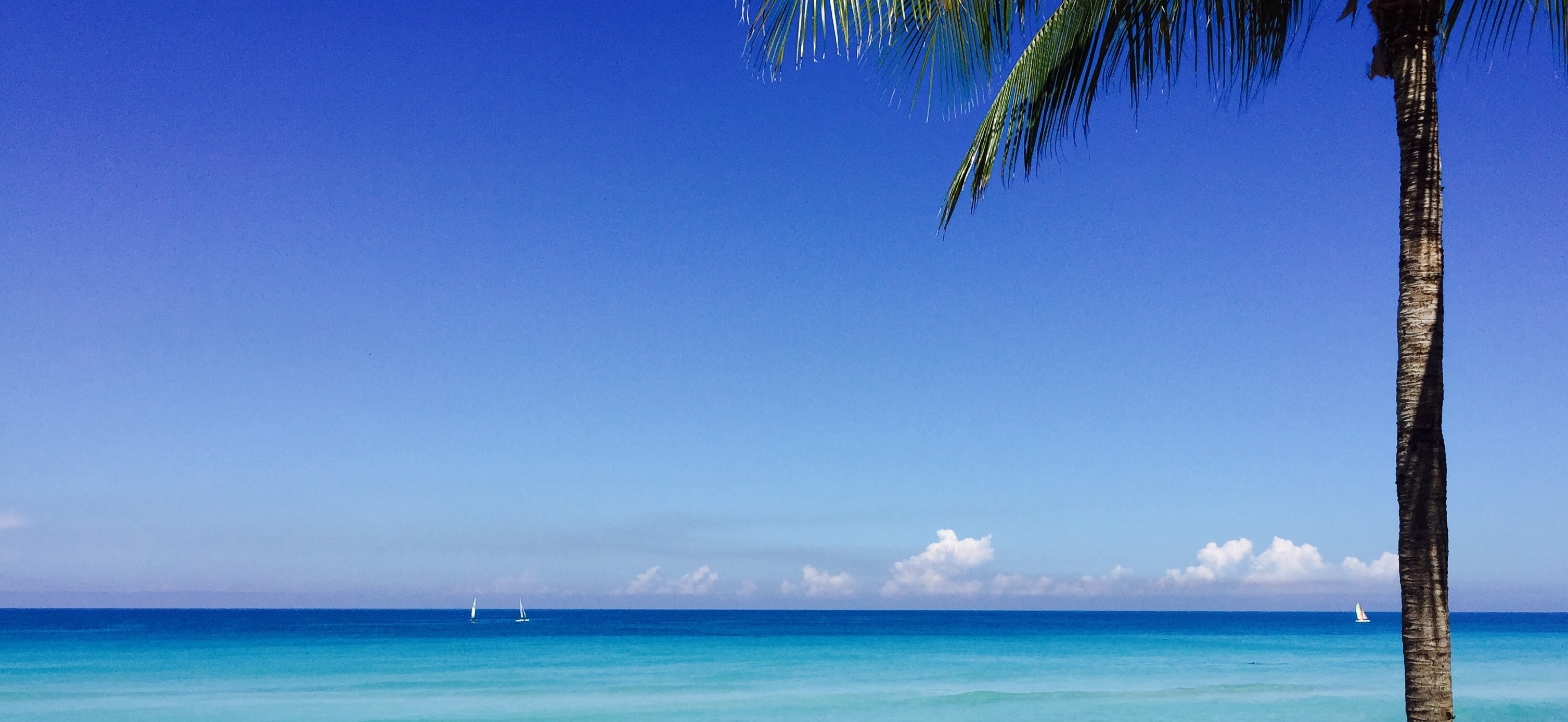Our two-week trip through Vietnam was coming to an end and our last stop was Saigon or Ho Chi Minh City. The current name was given after the Fall of Saigon in 1975 and honours Hồ Chí Minh, the first leader of North Vietnam. Even today, however, the informal name of Sài Gòn remains in daily speech, especially among the local southern Vietnamese people.
Saigon could not be more different to Hoi An. It is one of the busiest places we have been on our travels, rivalling even Bangkok or Kuala Lumpur. The traffic and people seem to be on overdrive – it is simply madness. I think if we had travelled from South to North and started in Saigon, it would totally have freaked me out. But now crossing the road and dealing with the crowds was old hat… although still overwhelming. Motorbikes simply do not stick to the road in Saigon. Pavements, traditional safe havens to the humble pedestrian, are dangerous places to be as bikes overflow from everywhere to try to escape the gridlock on the streets. Red lights are always flagrantly disregarded and there is simply no let up.
To make matters slightly worse, Adrie booked a “central” hotel on backpackers’ street, which means a party like no other. In fact, when you step out onto the pavement at night it feels as if you’ve walked into a rave.
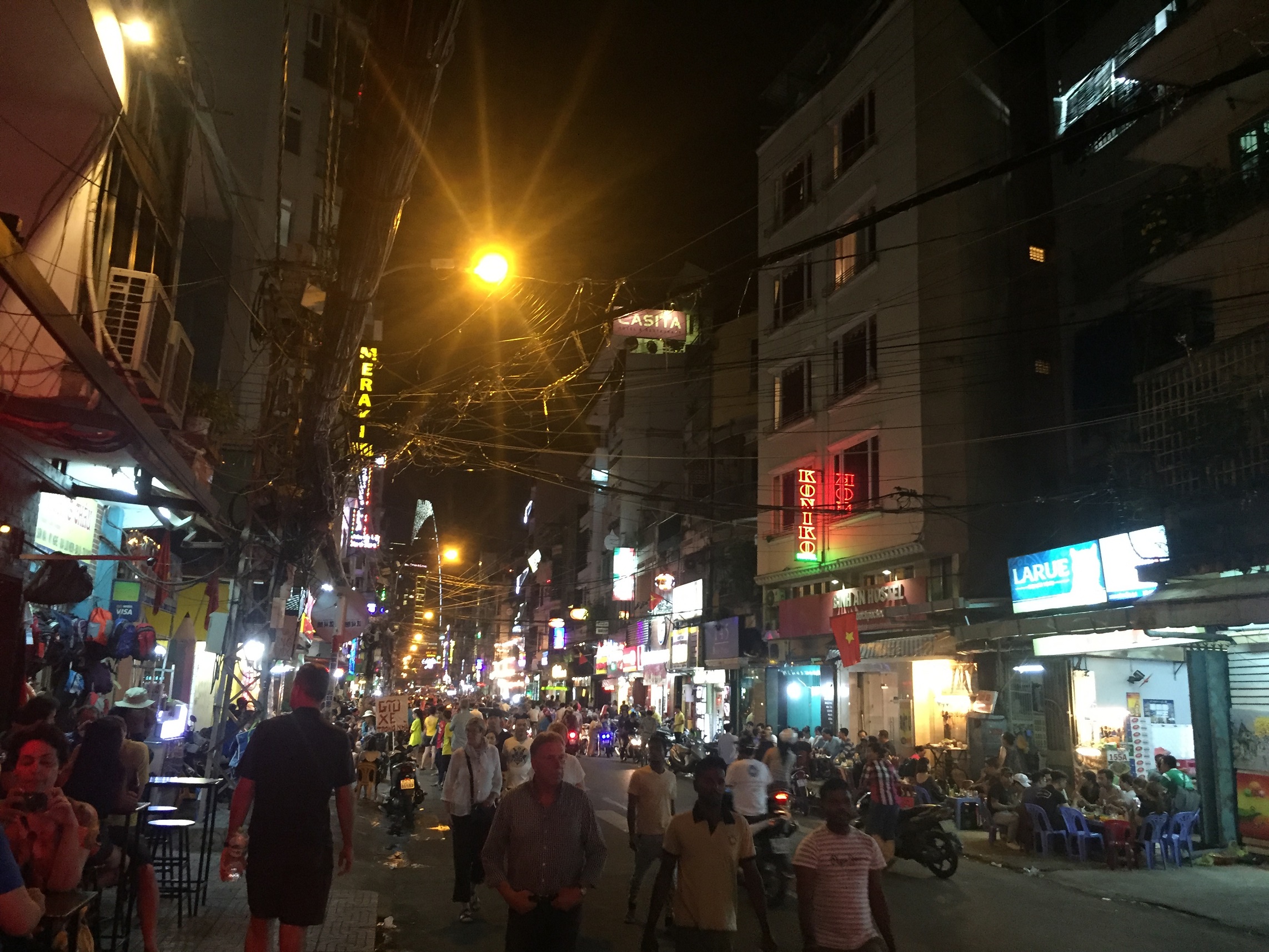
Our crazy street in District 1 – the backpackers street
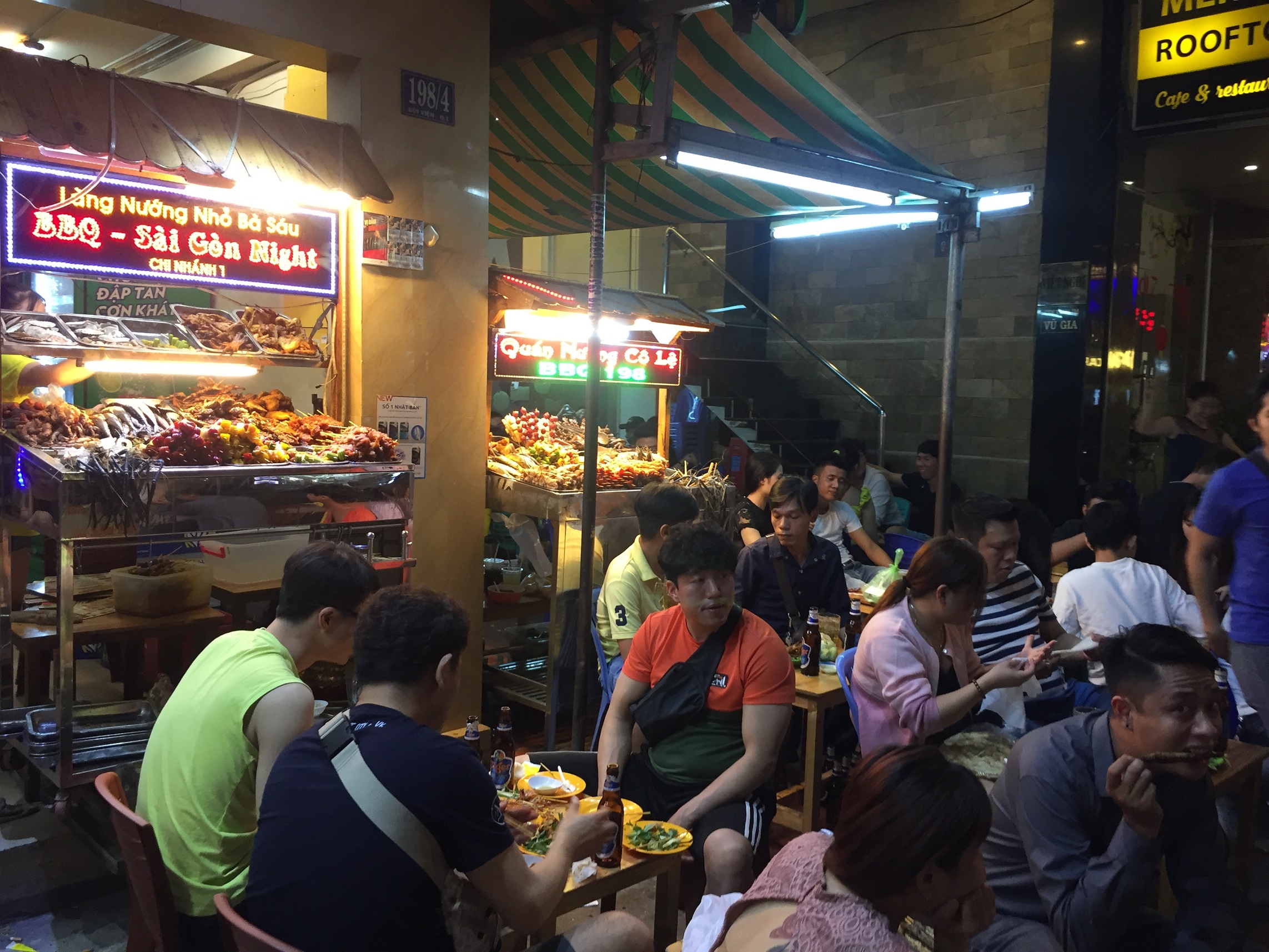
One of the street cafes that were always packed with locals
The music was still going at 3am from the nearby pubs and clubs. Every establishment has a horde of young girls dressed in very short dresses trying to entice customers into the bar or restaurant. Saigon is lights and sounds and chaos. Quite a shock after the tranquil Hoi An but I kind of like it.
Saigon is the base from which people explore the Cu Chi tunnels, but it also boasts some of the most important museums about the Vietnam war – or the American War as it is known by locals. We had two places we wanted to see today: the Reunification Palace and War Remnants Museum.
If ever there was an example of “History is written by the winners”, Vietnam would be it. The Reunification Palace, previously known as the Independence Palace, was the home and office of the President of South Vietnam. Like many things since 1975, it has changed names.
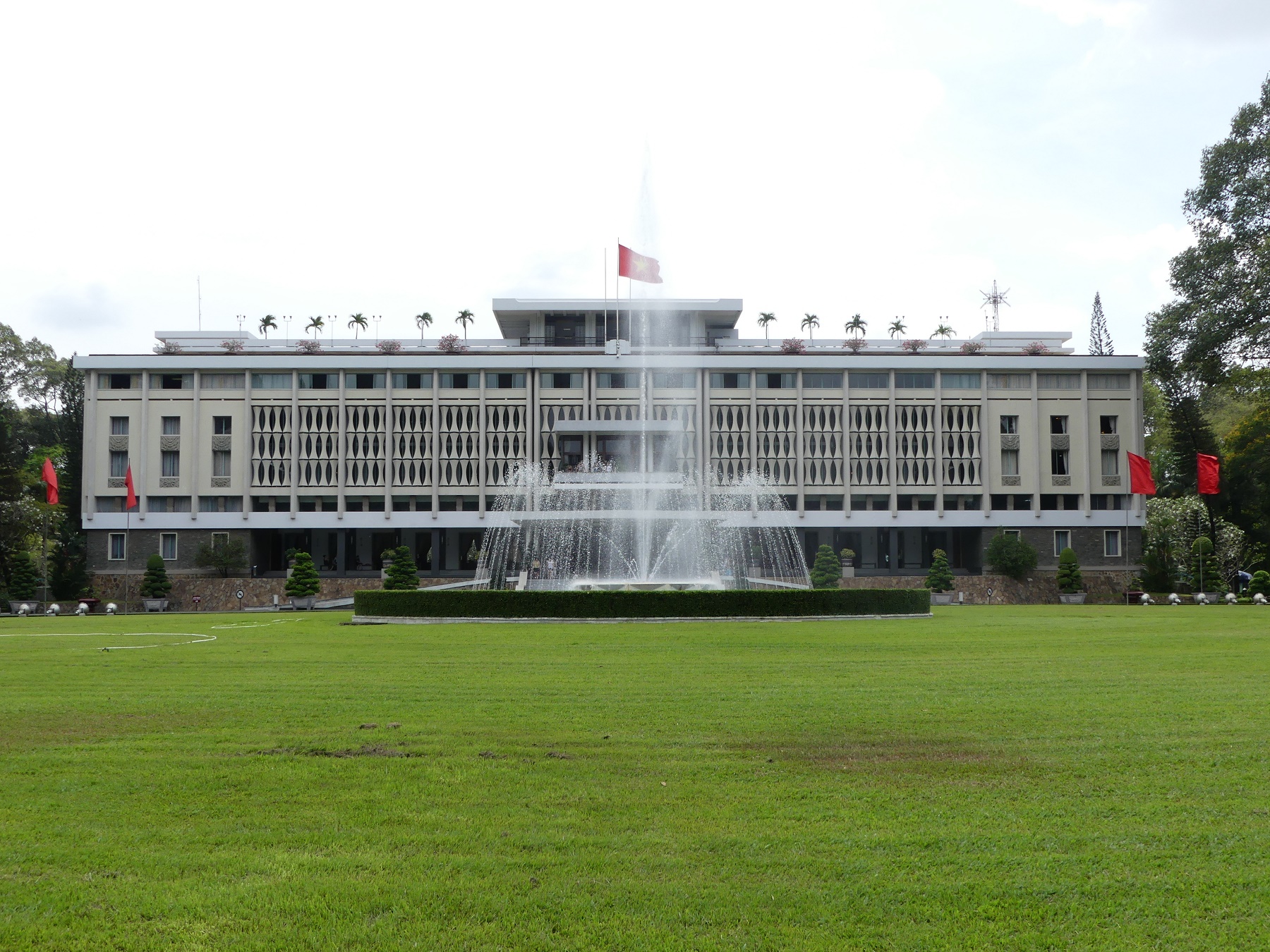
The Reunification Palace
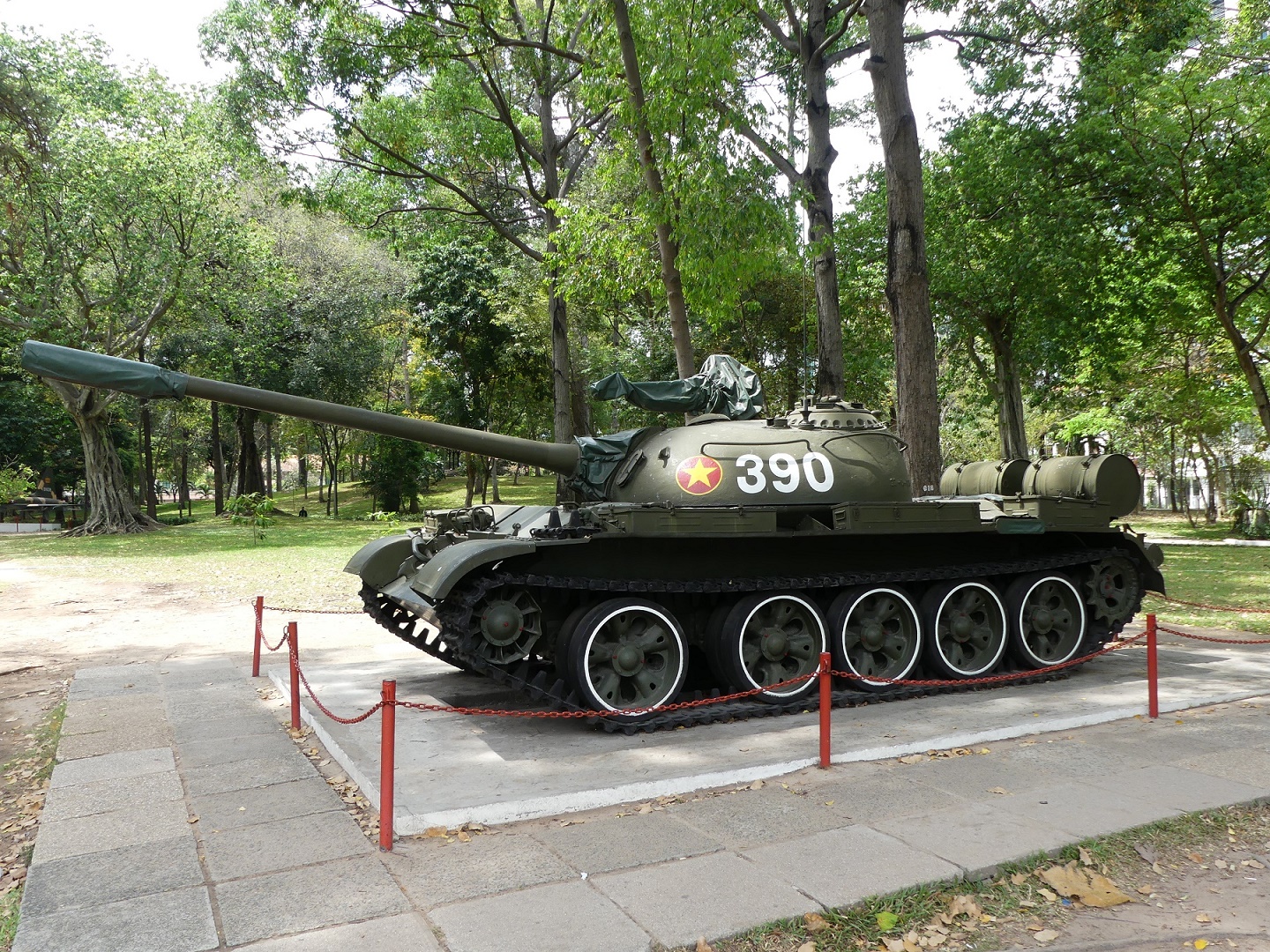
One of the original tanks that broke through the gates in April 1975
What hasn’t really changed is the building itself. It was like walking back into the 1960s and 70s. The offices still have pictures of JFK on the wall, furniture is typical 60s style and the phones are all finger dial versions. The maps on the wall reveal troop counts and troop movements during the war. The downstairs bunker and war room seems to be ready to have the old radios crackle back into life.
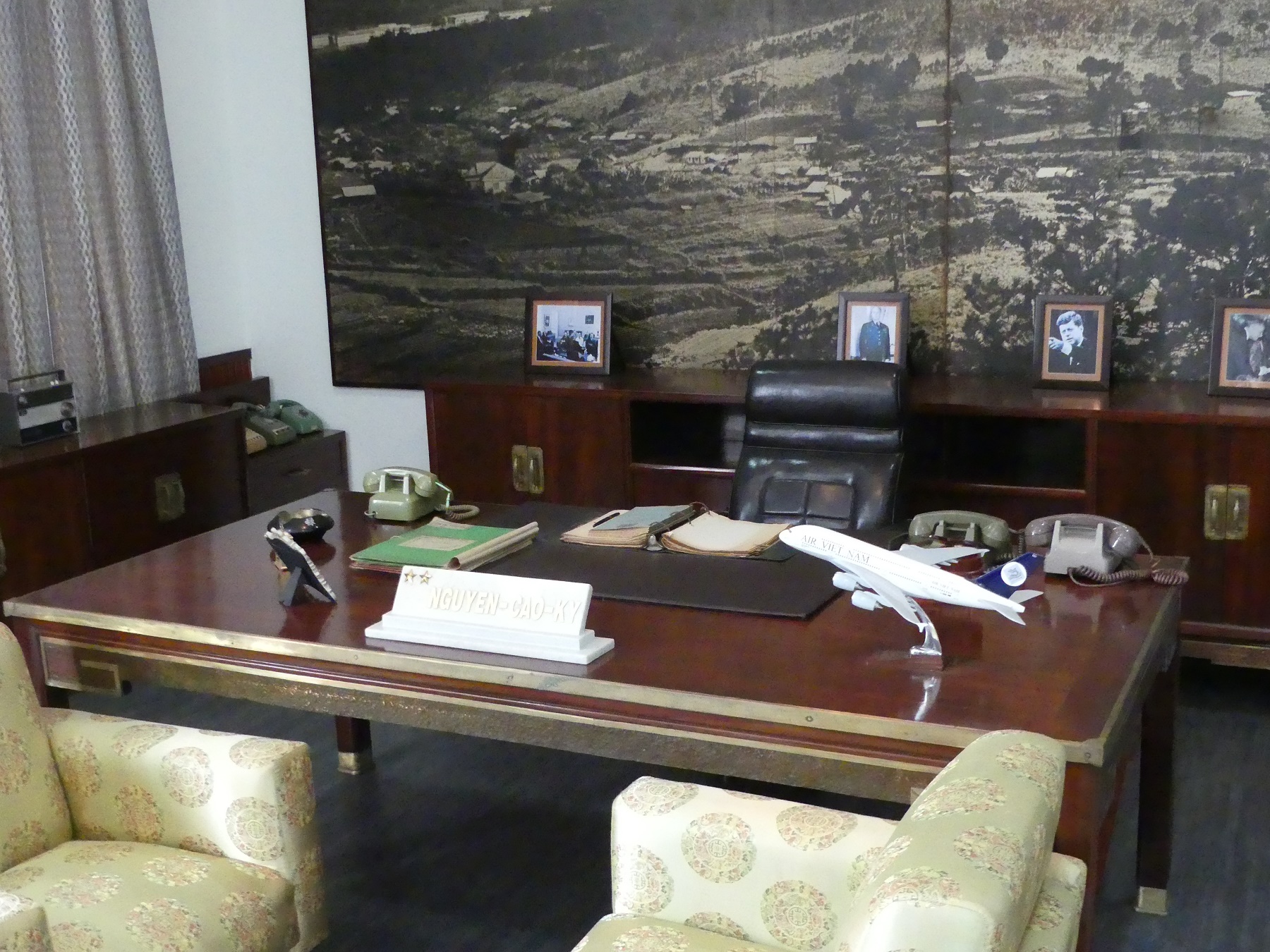
The office of the vice President of South Vietnam at the time, with pictures of JFK
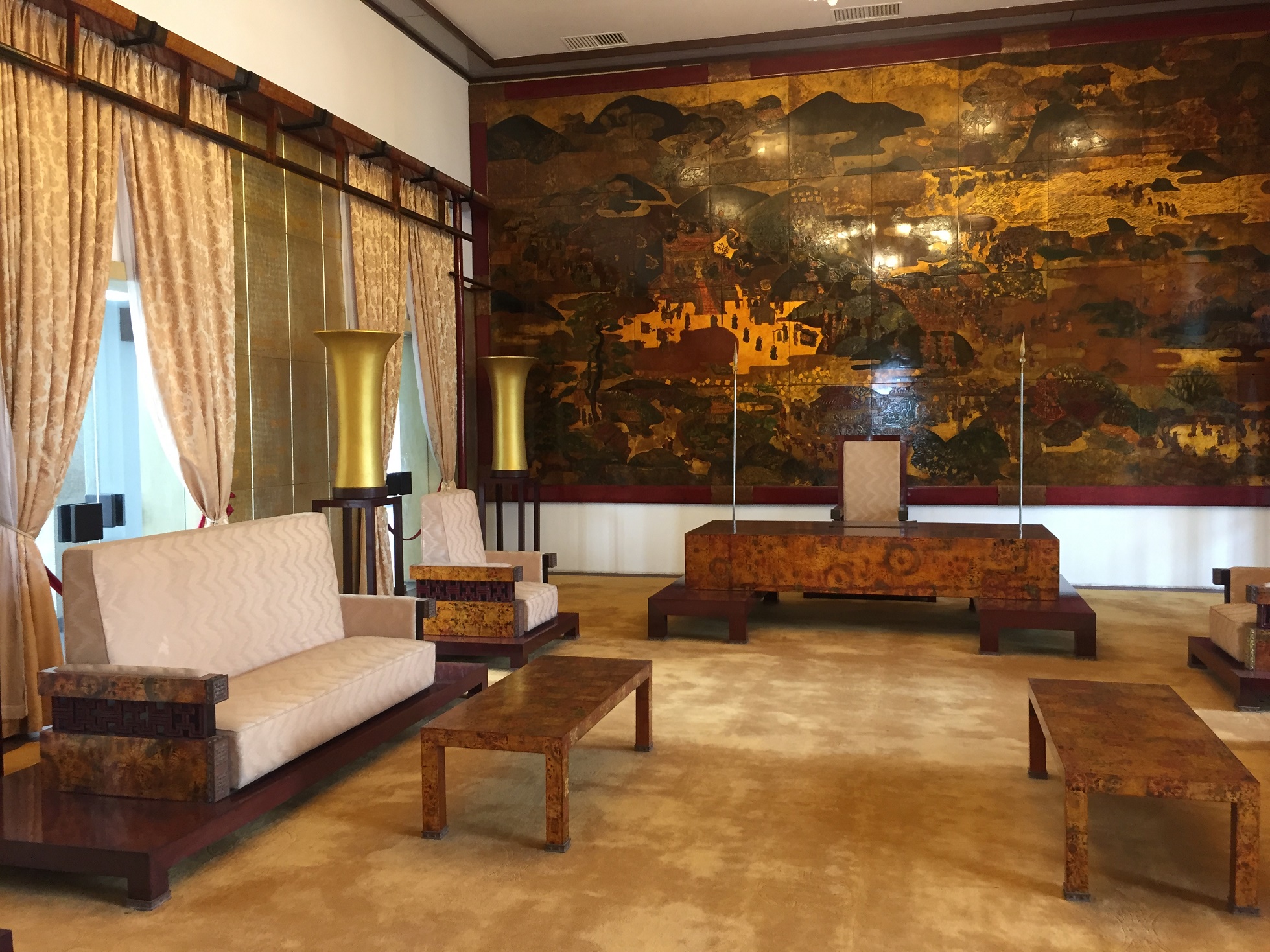
One of the rooms where the President met with various Heads of State
There were pictures of Kissinger and Nixon meeting with the Head of State. The maps showed the battle plans and supply numbers. Over 8000 Australian and New Zealand troops were fighting in Vietnam. Who knew? I would have loved to have been a fly on the wall during some of the meetings that were held in these offices.
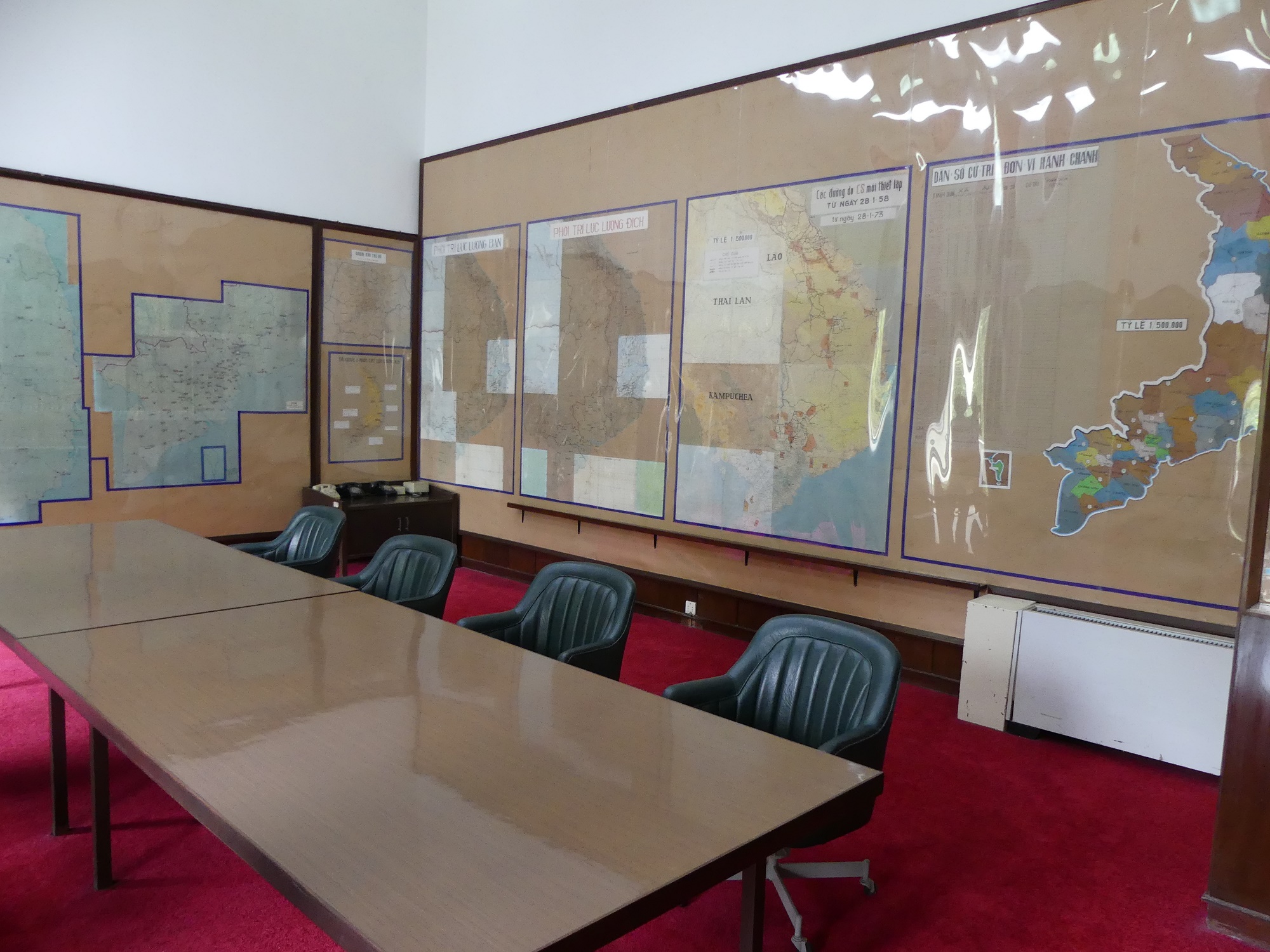
The crisis communications war room, with various maps showing the advancement of the enemy across Vietnam

Walking through the underground bunker with radios and various other communication systems
However, the information and the message given to the people has changed. The “fall of Saigon” is referred to as the “reunification of Vietnam”. Where people might have talked of the Vietnam Cong “invading” the South, it is now rebranded as “liberated the South”. The propaganda was clear and prevalent everywhere from the tanks in the garden (supposed to be the original tanks that broke through the gates in 1975) to the big red circles marking the spot where the palace was once bombed. It was very interesting to hear the perspective from the other side though.
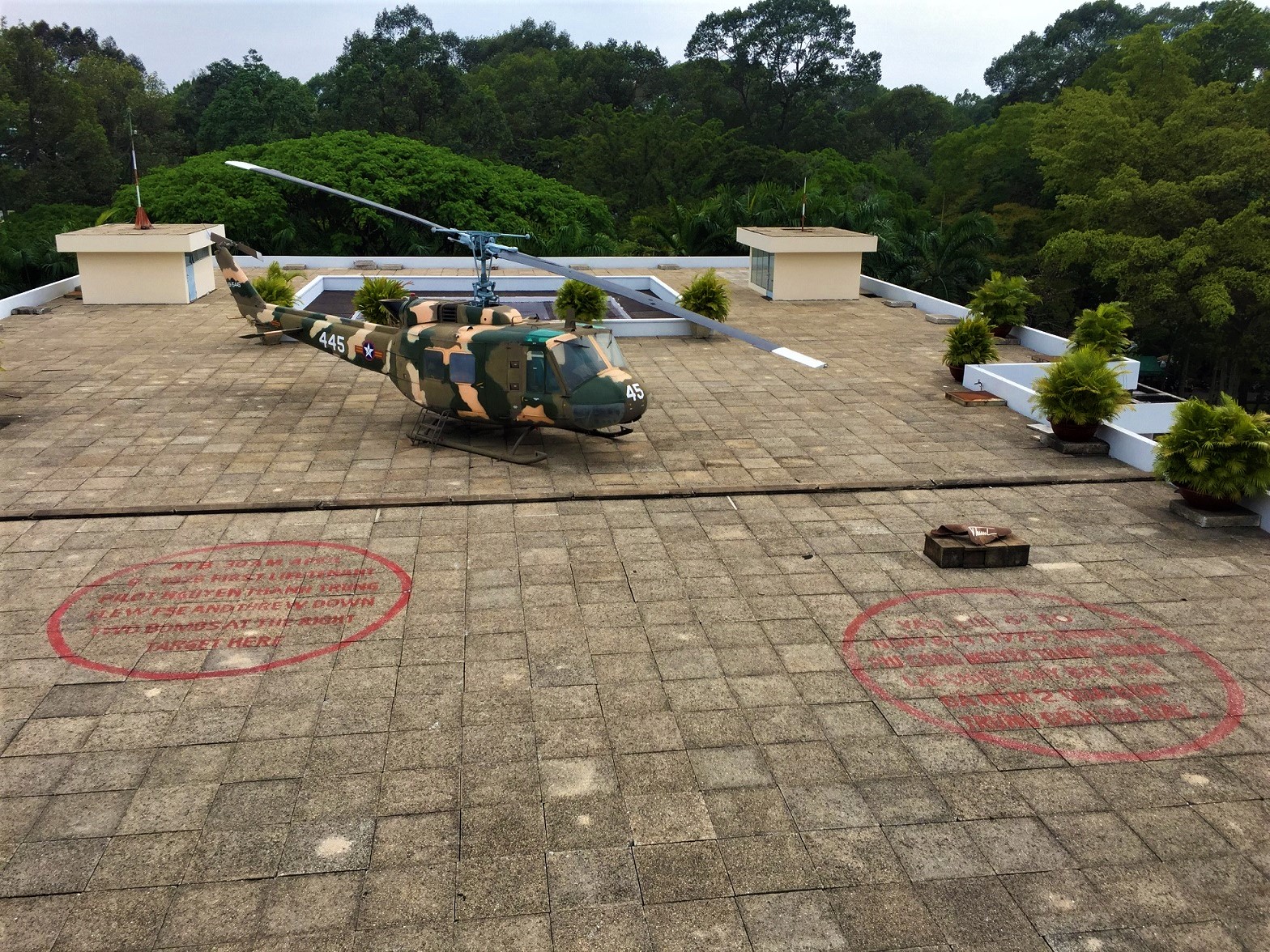
X marks the spot. The two big red circles indicate where the bombs fell in March 1975
Our next stop was the War Remnants Museum, formally known as the American War Crimes Museum. It displays mostly pictures from the war (some in graphic detail) and really drove home the brutality of war especially on the civilians. While the displays are very one-sided, it is very rare to hear a non-Western opinion regarding US military actions. They obviously had a few prized spoils of war on display from gun turrets and US tanks to Chinook and Huey helicopters, but I left feeling a bit sad and wondering where it all went so wrong.
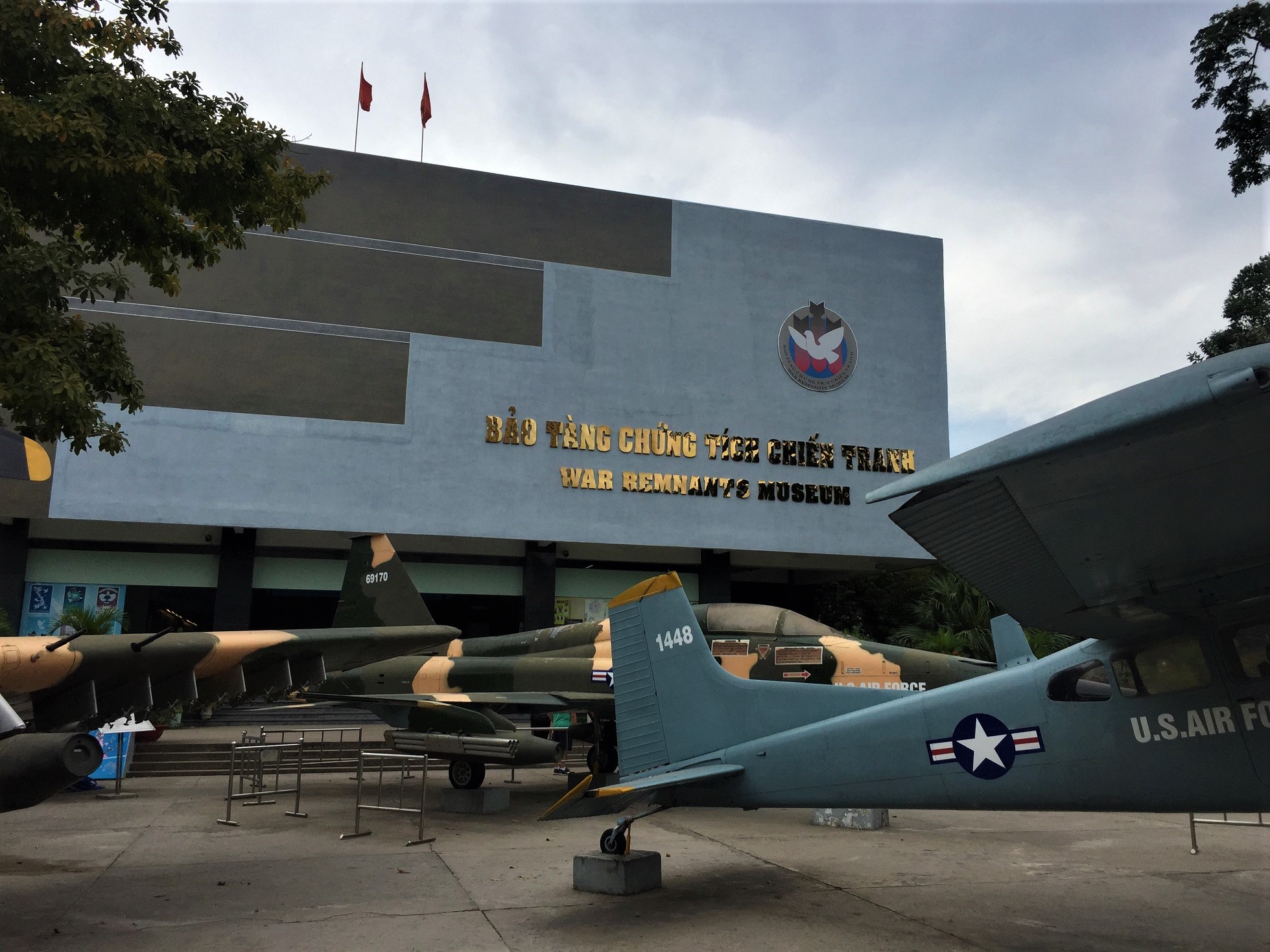
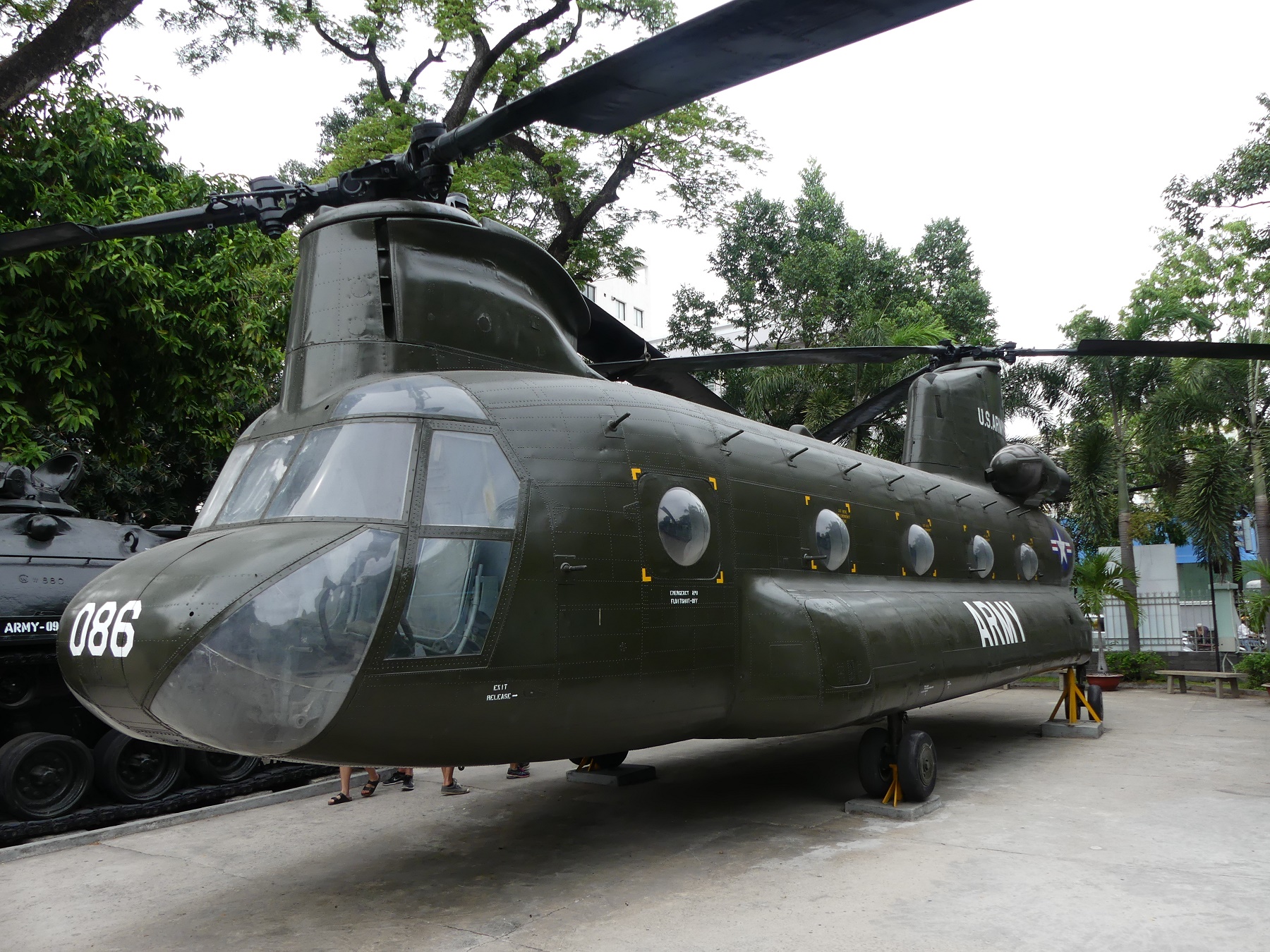
There is no absolute truth in war. Some see the US as standing by its ally of South Vietnam against aggression from the communist North. Others see it as the US invading and keeping a puppet government in power to exploit the South and the people needed liberating. The end result was 3,000,000 dead!
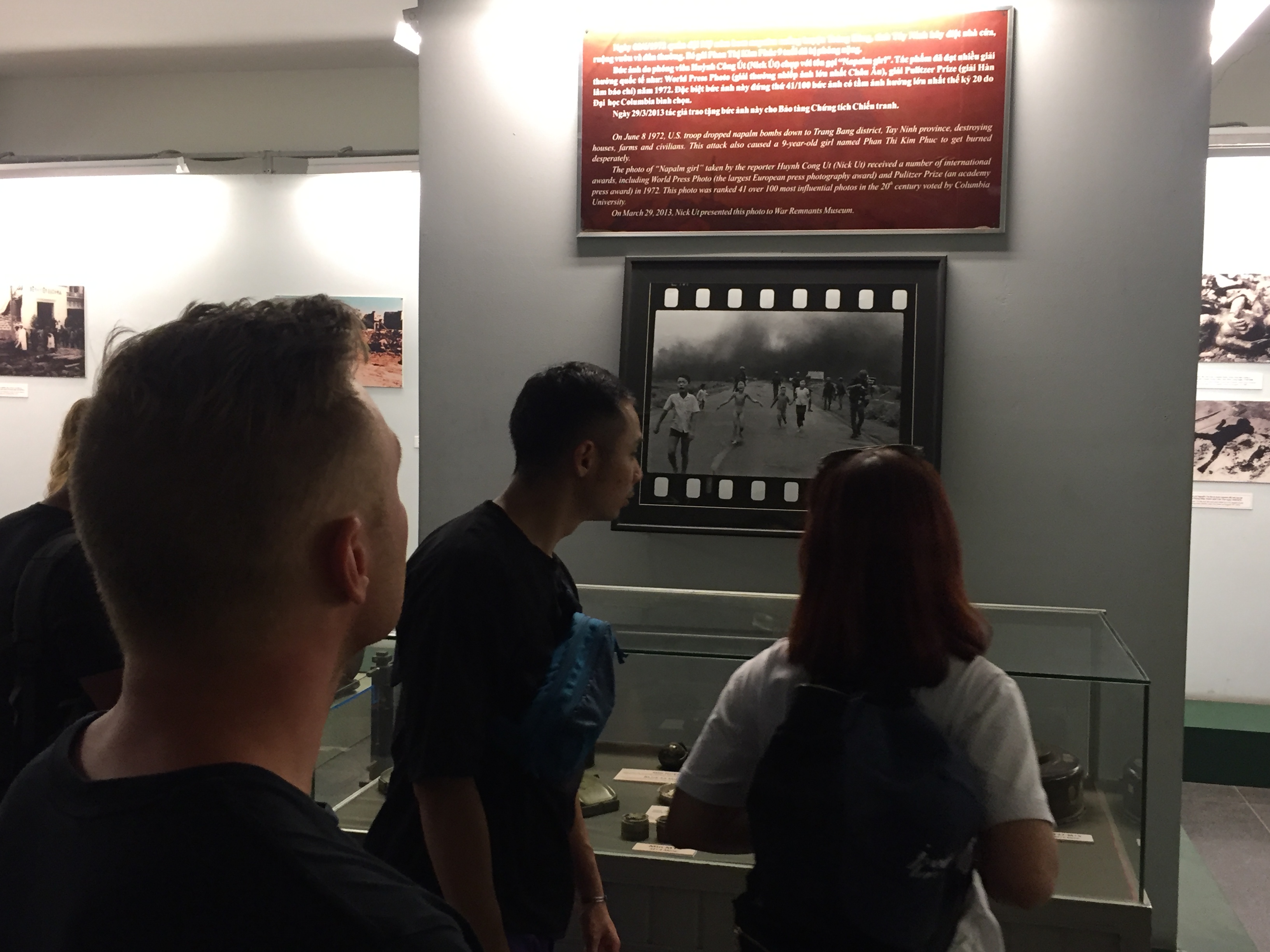
The Pulitzer Prize-winning photograph depicting the harshness of war where a nine year-old girl (the “Napalm girl”) is running away from the enemy after a napalm attack
Our time in Saigon wasn’t all war and doom and gloom.
We saw the city’s other highlights, which include the Central Post Office that was designed by one Gustav Eiffel. This is right next to Notre Dame Cathedral. In one city block in central Saigon you feel as if you have been transported to the middle of Paris in summertime.
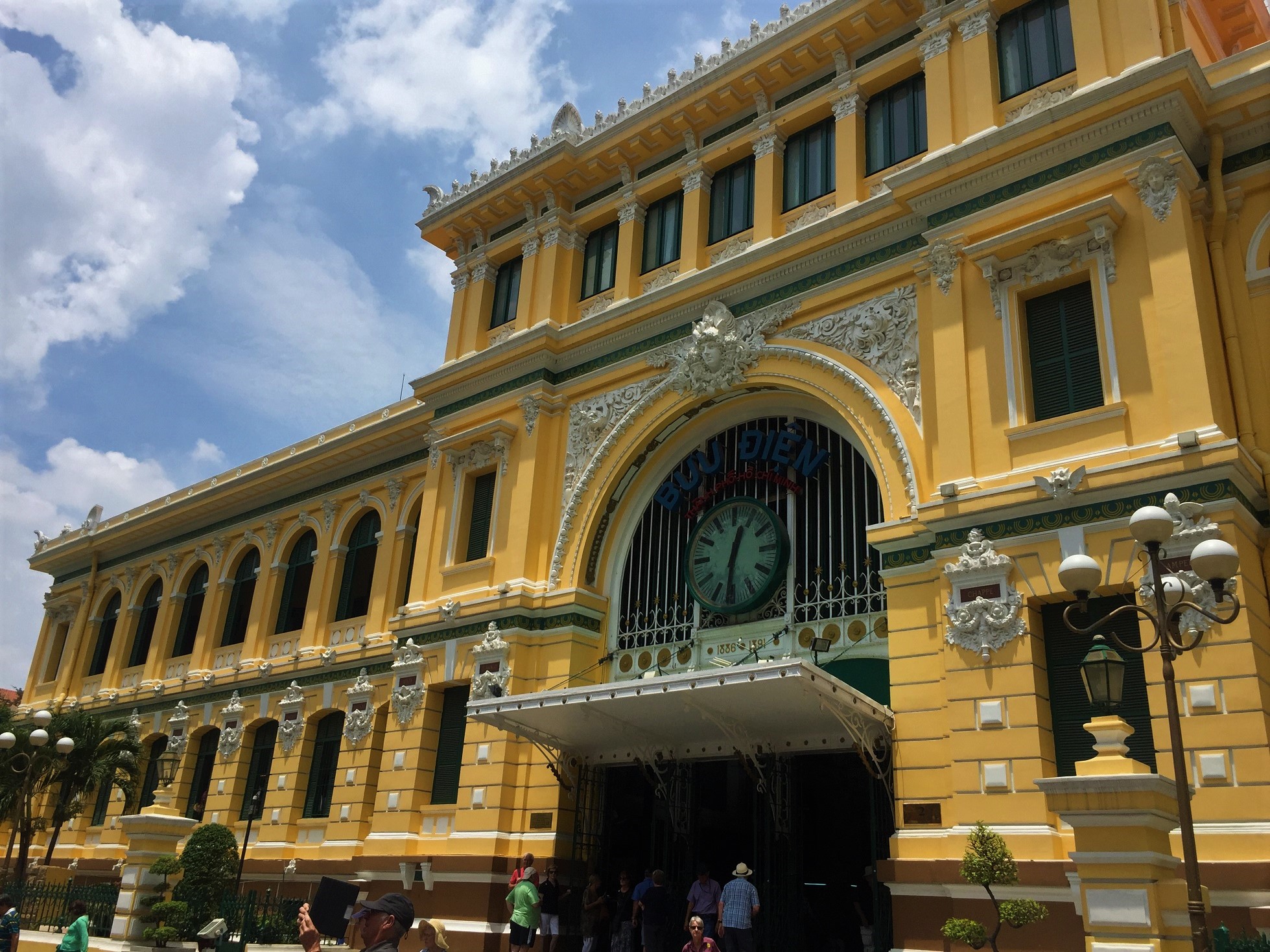
The pretty Post Office building from outside

Notre Dame Cathedral
Next to this “French quarter” was a very interesting ice cream shop. They use liquid nitrogen to freeze the ice cream instantaneously and promises the most creamy ice-cream you have ever tasted as it contains no ice crystals. Of course we had to try it! While it was quite delicious, we both agreed it was a bit too creamy and rich – a meal in itself.
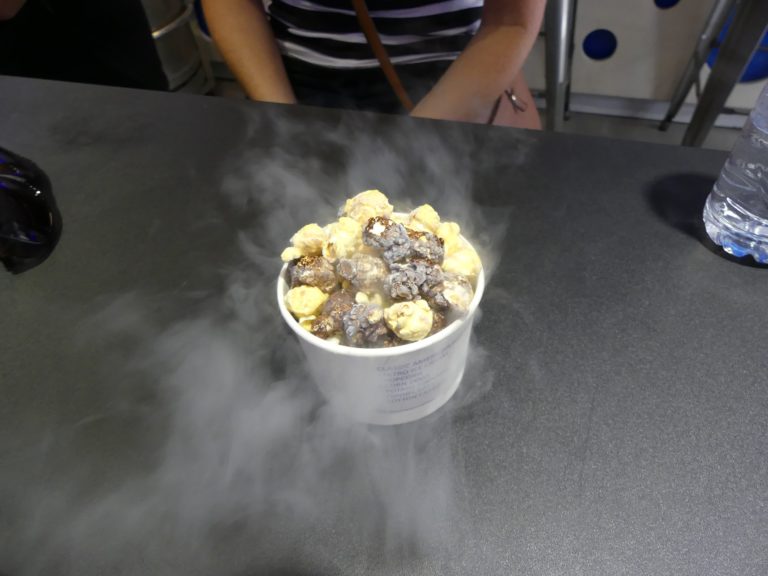
“Dragon’s breath” or popcorn sizzling in liquid nitrogen. Delicious!!
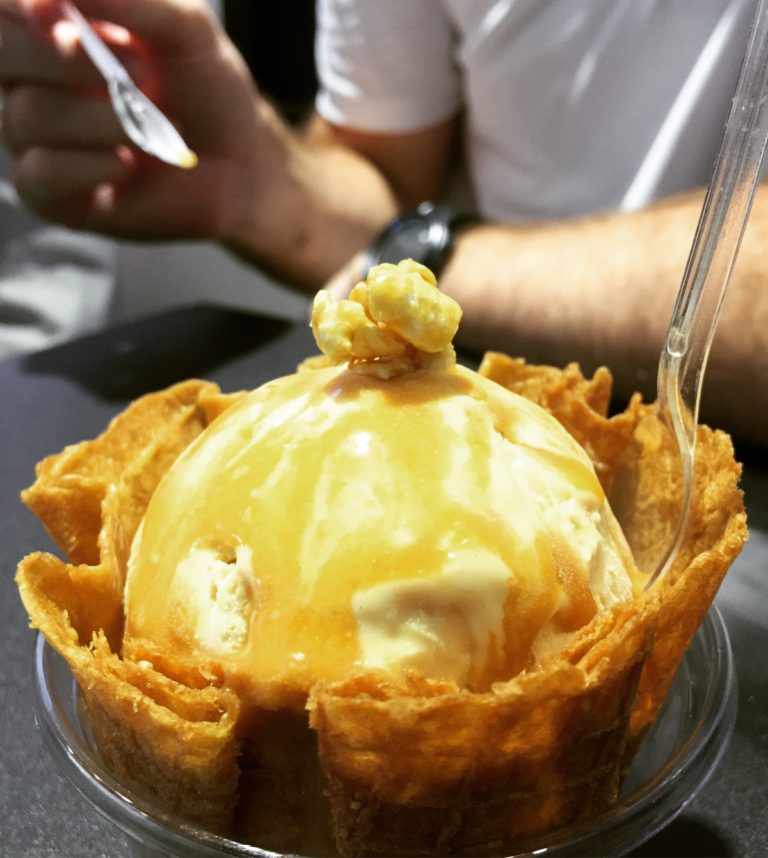
Adrie ordered the browned butter ice cream, which was ridiculously rich!
For our last evening in Vietnam I decided it was necessary to have a steak dinner with wine. We found a place that allows us to cook our own meat on a hot stone and tucked into some of the nicest ribeye that I have had in months.
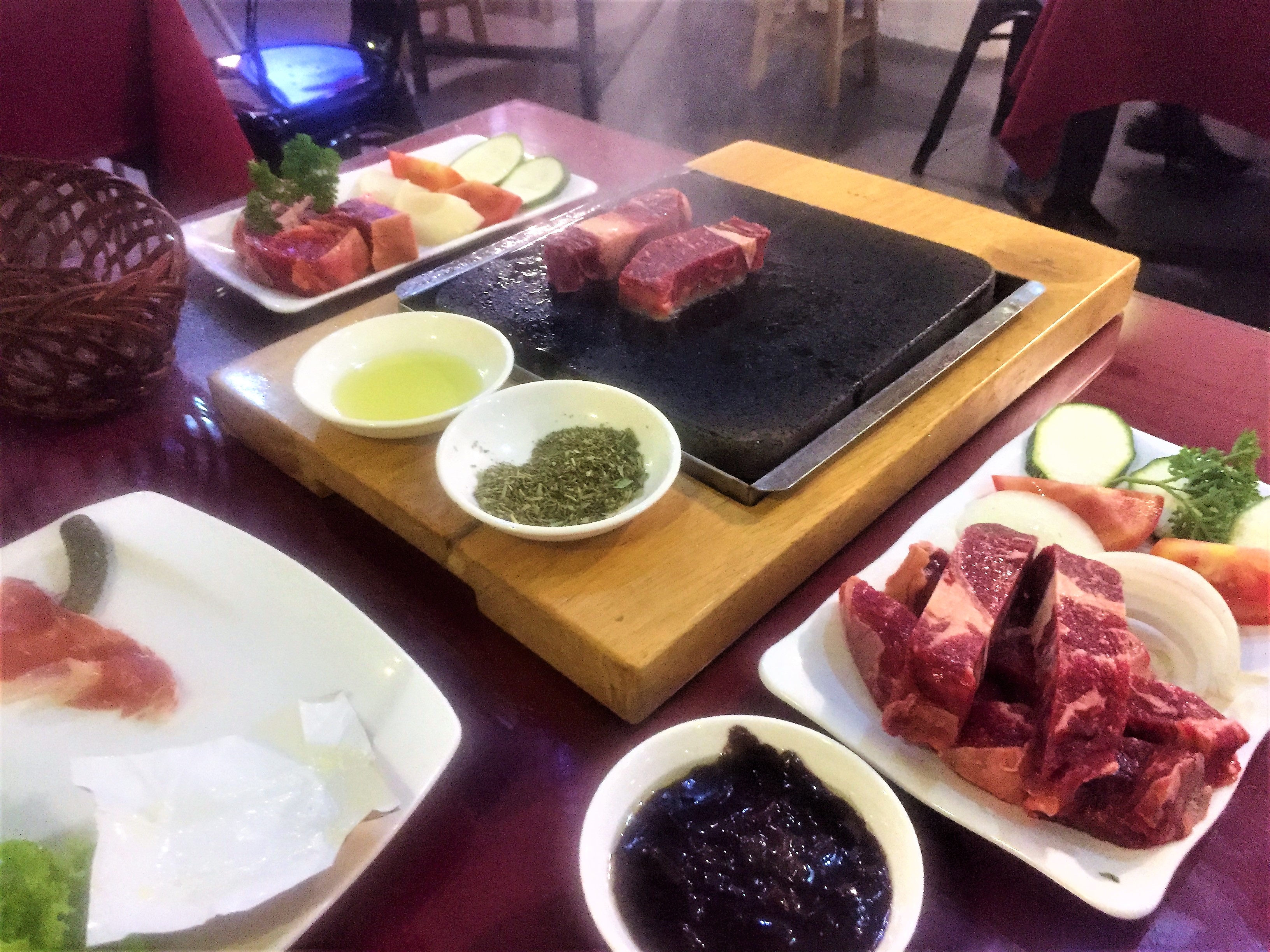
We have only touched the surface of this interesting and diverse country and thoroughly enjoyed our two weeks. It will be interesting to see what happens in future with all the new Chinese money coming in. It would not be wrong to call this simply another invasion (or liberation).
